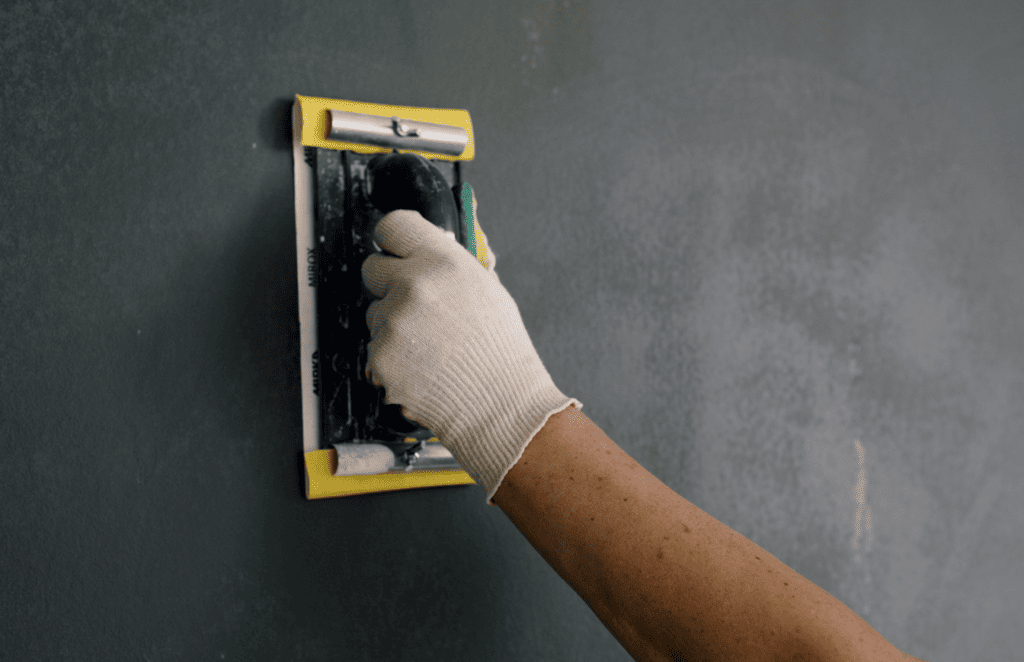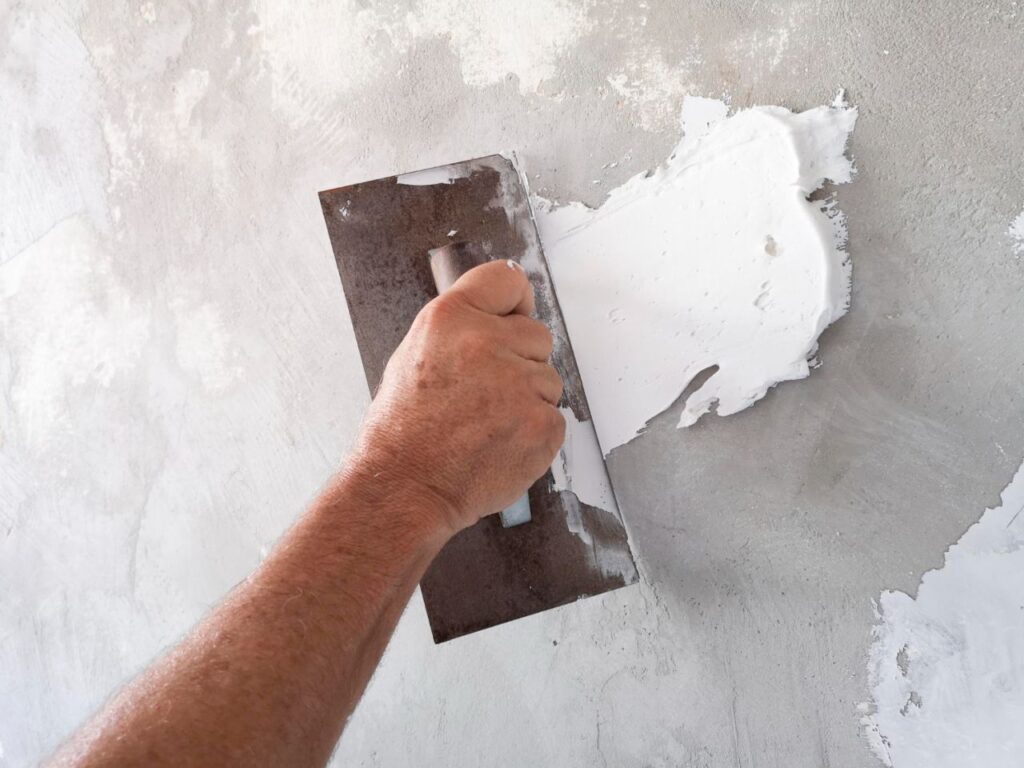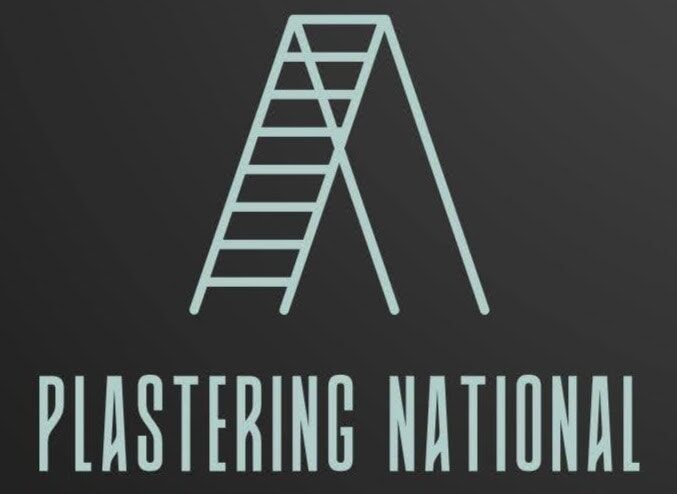Plastering is an essential part of the construction process, providing both aesthetic and functional benefits to walls and ceilings. While plastered surfaces enhance the appearance of buildings, they are also prone to certain defects over time, which can compromise their integrity.
These defects, such as surface cracking in plaster, plaster blistering, and peeling plaster, can affect both the visual appeal and durability of plastered surfaces. This guide will help you understand the most common plastering defects, how to prevent them, and the best repair techniques to maintain the quality of your plastered surfaces.
Let’s Get Straight To The Point
Plastering is essential for both functionality and aesthetics in construction, but defects like surface cracking, blistering, peeling plaster, and efflorescence can occur over time. These issues often result from improper mixing, poor workmanship, moisture, and inadequate surface preparation.
To prevent defects, use high-quality materials, apply correct techniques, and conduct regular inspections. If defects occur, repair methods such as plaster patching, replastering, and waterproofing can restore plastered surfaces. Early identification and prevention help maintain plaster’s durability and appearance for the long term.
Why Is Identifying Plastering Defects Important?
Timely identification of plastering defects is critical for maintaining the quality and longevity of plastered surfaces. Left unaddressed, issues such as damp plaster issues, mould growth in plaster, and efflorescence in plaster can worsen over time, leading to costly repairs.
By recognising and addressing these defects early, you can ensure that plaster continues to provide its protective and aesthetic benefits without compromising structural integrity.
Common Types of Plastering Defects
1. Surface Cracking in Plaster
Surface cracking in plaster is one of the most common defects found in plastered walls and ceilings. These cracks may form due to rapid drying, incorrect mix ratios, or inadequate surface preparation before plastering. While surface cracks do not always affect the structural stability of plaster, they can detract from the surface’s visual appeal.
- Cause: Incorrect plaster mix ratios, rapid drying, and poor surface preparation.
- Solution: To avoid cracks, use the proper mix ratios for plaster and ensure that the surface is adequately prepared before application. Avoid rapid drying by controlling environmental conditions.
2. Plaster Blistering
Plaster blistering occurs when air or moisture becomes trapped between layers of plaster, creating raised patches or bubbles on the surface. This defect often arises from poor surface preparation or excessive moisture content.
- Cause: Improper surface preparation, excessive moisture content, or incorrect application techniques.
- Solution: To prevent blistering, ensure that surfaces are thoroughly cleaned and prepared before plastering. Proper ventilation and the correct plaster thickness can also help avoid this issue.
3. Peeling Plaster
Peeling plaster happens when the plaster separates from the base material, often due to poor adhesion, excess moisture, or the use of incompatible materials. This can lead to further deterioration if not addressed in time.
- Cause: Excess moisture infiltration, poor workmanship, or the use of incompatible materials.
- Solution: Investigate and resolve the moisture issue promptly. Additionally, use suitable bonding agents to ensure proper adhesion between the plaster and the substrate.
4. Efflorescence in Plaster
Efflorescence in plaster appears as white, powdery deposits on the surface, caused by the migration of soluble salts. It typically occurs in areas with high moisture exposure, such as basements or exterior walls.
- Cause: Moisture infiltration causing the migration of soluble salts.
- Solution: Prevent efflorescence in plaster by using high-quality plastering materials and applying waterproofing plaster solutions. Ensuring proper ventilation and addressing moisture issues can also help reduce the occurrence of efflorescence.
5. Debonding in Plaster
Debonding in plaster occurs when the plaster detaches from the substrate, creating gaps or air pockets. This defect often results from inadequate curing, poor adhesion, or the use of mismatched materials.
- Cause: Inadequate curing, incompatible materials, or improper bonding agents.
- Solution: Ensure adequate curing times and use compatible bonding agents to guarantee that plaster adheres properly to the surface.
6. Plaster Delamination
Plaster delamination refers to the separation of plaster layers, resulting in a layered or uneven appearance. It usually occurs due to improper mixing, thick application layers, or insufficient curing time.
- Cause: Poor plaster workmanship, excessive plaster thickness, or improper curing.
- Solution: Apply plaster in thin, controlled layers, and ensure proper curing between each layer to avoid delamination.
7. Hollow Plaster
Hollow plaster is characterised by gaps or air pockets between the plaster and the substrate, leading to a reduced lifespan of the surface. This can occur due to poor application techniques or the use of substandard materials.
- Cause: Incorrect plaster mix ratios or poor application methods.
- Solution: Proper mixing and application techniques will help ensure a solid, uniform plaster layer without air pockets.
8. Shrinkage Cracks in Plaster
Shrinkage cracks in plaster are caused by the plaster drying and contracting too quickly. These cracks can be minimised by ensuring proper curing and drying processes.
- Cause: Rapid drying or improper curing methods.
- Solution: Control the drying environment and allow the plaster to cure slowly to minimise shrinkage cracks.
Causes of Plastering Defects
1. Incorrect Plaster Mix Ratios
One of the most common causes of plaster defects is incorrect plaster mix ratios. An improper mix of cement, sand, and water can lead to defects like peeling plaster, surface cracking, and debonding. It is essential to follow the recommended proportions for a durable and stable plaster finish.
2. Poor Plaster Workmanship
The skill of the plasterer significantly impacts the final result. Poor plaster workmanship can lead to uneven surfaces, improper coverage, and defects that reduce both the aesthetic appeal and structural stability of the plastered surface.
3. Improper Surface Preparation for Plaster
Before plastering, the surface must be thoroughly cleaned and primed. Failure to do so can lead to various defects such as blistering, peeling, and delamination. Proper preparation ensures that the plaster adheres correctly to the surface.
4. Moisture-Related Issues
Moisture is one of the leading causes of plaster defects, including damp plaster issues and mould growth in plaster. Excess moisture can weaken the plaster, leading to peeling, efflorescence, and the growth of mould.
- Solution: Address moisture issues by applying waterproofing plaster and ensuring that any leaks or sources of moisture are fixed promptly.
Preventing Plaster Defects
1. Use High-Quality Plastering Materials
The selection of high-quality plastering materials is essential for preventing defects. Choose materials that are suitable for the environment and climate, ensuring better durability and performance.
2. Apply Proper Techniques
Adhering to the correct application methods, such as using the right plaster mix ratios, following curing times, and ensuring proper surface preparation, will minimise defects and ensure a smooth, durable finish.
3. Conduct Regular Inspections
Regular inspections of plastered surfaces allow you to detect any early signs of plastering defects. Early detection can help prevent minor issues from escalating into larger, more expensive problems.
Repairing Plaster Defects
1. Plaster Patching Techniques
Plaster patching techniques involve filling minor cracks or holes with a thin layer of plaster to restore the surface. This is suitable for small defects such as surface cracking in plaster and can help restore the aesthetic quality of the wall or ceiling.
2. Replastering Damaged Surfaces
If the damage is more extensive, replastering damaged surfaces may be necessary. This process involves removing the old plaster and applying a fresh layer to restore the surface to its original condition.
3. Waterproofing Plaster
If moisture is the cause of the plaster defects, applying waterproofing plaster is crucial. This solution helps protect the plaster from further moisture damage, preventing issues like damp plaster issues, mould growth in plaster, and efflorescence.
Conclusion
Plastering plays an integral role in construction, offering both functional and aesthetic benefits to buildings. However, plastering defects such as surface cracking in plaster, peeling plaster, and efflorescence in plaster can affect the longevity and appearance of plastered surfaces. Early identification and prompt repair can help maintain the durability and beauty of plastered areas.
By using high-quality plastering materials, applying the correct techniques, and conducting regular inspections, many of these defects can be prevented. When defects occur, methods like plaster patching techniques, replastering damaged surfaces, and waterproofing plaster can restore plaster to its original condition.
To achieve the best results, it is essential to choose an experienced plasterer who follows industry standards and best practices. With the right approach, plastering can provide a long-lasting, high-quality finish that enhances the aesthetic appeal and structural integrity of any building.
Frequently Asked Questions
How Does Shrinkage Affect Plastering?
Shrinkage occurs as the plaster dries and contracts, leading to cracks or gaps in the material. It can happen due to insufficient water content in the mix, improper curing, or using low-quality materials.
What Are Trowel Marks, And How Do They Occur In Plastering?
Trowel marks are irregularities or lines left behind on the plaster surface by the application tool. They can occur due to uneven pressure, improper technique, or inadequate plaster smoothing.
Can Defects In Plastering Be Prevented?
While some defects may be inherent to the plastering process, proper preparation, application techniques, and adherence to manufacturer guidelines can help minimise the risk of defects.
How Can Defects In Plastering Be Repaired?
Defects in plastering can be repaired by filling cracks and gaps with suitable patching compounds, sanding the surface smooth, and applying additional coats of plaster or paint as needed.
What Steps Should Be Taken If Defects Are Discovered In Plastered Surfaces After Completion?
If defects are found after plastering is complete, it’s essential to identify the root cause and take appropriate corrective measures. This may involve repairing the affected areas, addressing underlying issues, or consulting a professional plasterer for guidance.



